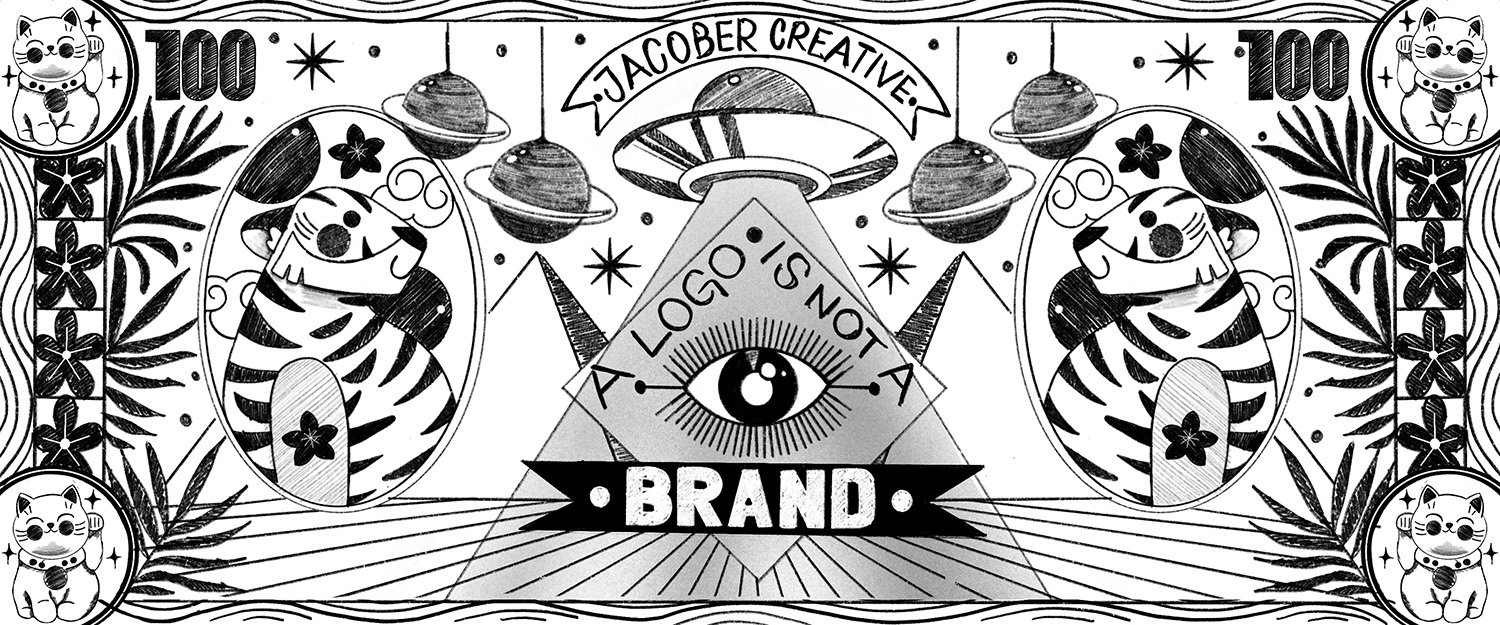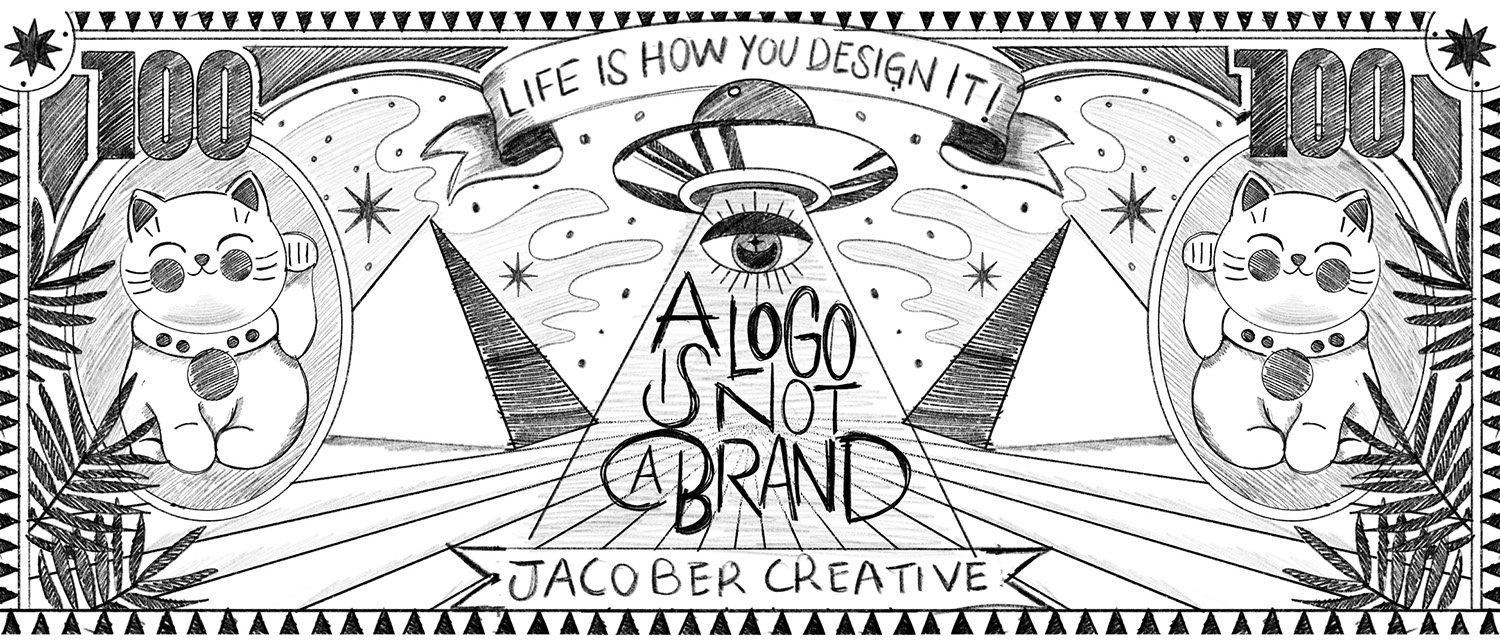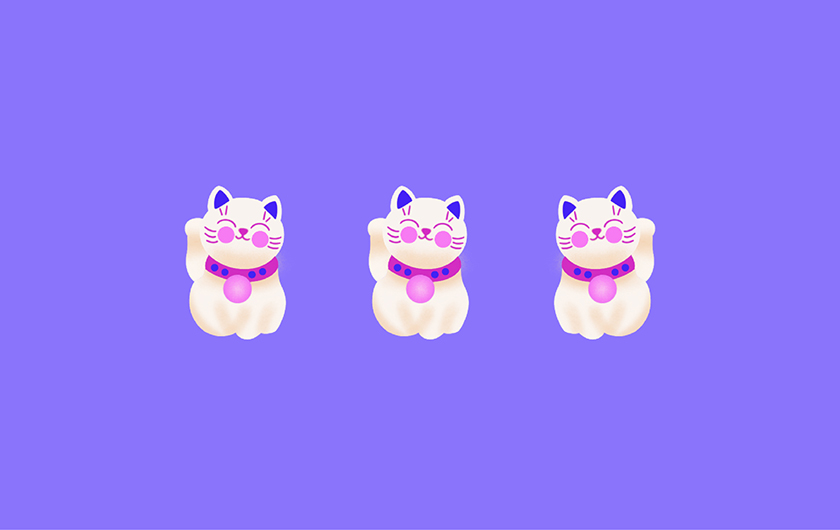Specifically, there are five components of a successful brand: narrative and mission, messaging, visual identity, differentiation, and experience. Read on to learn more about each of these aspects and how they work together to create a complete,
"badass brand."

Brand Narrative & Mission
Taking the example of
Target (tar-jay!), if you were to look at just their sleek logo of a red bullseye and nothing else, what would that tell you about this brand’s offerings? Not a whole lot in fact. An alien from Mars would have no clue that this is one of America’s leading retail companies, selling everything from stationary to bicycles. The narrative and mission are essential to developing a brand. Without defining these first and foremost, you have no foundation to build a logo or anything else.
We find that many clients get so excited about the fun part of graphic design that they want to create a logo first without answering this very important question: what is the purpose of this brand and why are we here? This helps define a brand mission statement, which is a few sentences that concisely explains what this product or service provides and its intended effect on the greater consumer experience.
Target’s mission is
“to help all families discover the joy of everyday life.” From the brand mission, you can build upon it and expand into the brand narrative. It shares the story of your company, how it came to be, what drives its purpose today and where it’s going long term. These building blocks are important not only for external consumer understanding, but also for your internal organization to get on board with. A company and its employees need to be unified in their sense of purpose through a cohesive message and overall goal.
Brand Messaging
Here is where you give your brand a voice. This is a crucial component of a brand because it makes up the unseen identity and a big part of how consumers will perceive it through various touch points. From a quick tagline in an ad campaign (
“I’m Lovin’ It”) to the copy on a website or blog, the way in which brand messaging is crafted tells the audience what the key brand messages are and gives it some personality.
Some questions that may arise during this process could be things like: should the brand tone be serious and somber or witty and clever? Is the message direct and action-oriented or maybe more artistic and inspirational? For instance, some consumers are looking at how brands are creating messages that respond to the current moment, or if they are silent on things that matter when it comes to social activism.
Many different kinds of consumers these days, Gen Z especially, want to purchase from or work for companies they feel align with their values and beliefs. Over the summer of 2021, the
National Basketball Association put out a loud and clear message at their games with the words
“Black Lives Matter” painted in big bold letters across the basketball courts for the season. It sends a very direct, timely and impactful message about what their brand stands for to people both watching and playing the sport.

Brand Differentiation
Another important pillar of the invisible brand identity is brand differentiation – what makes your brand stand out. In any industry, there is plenty of competition. So why should someone choose your brand over the rest? This is a key factor when consumers are making a purchasing decision. The benefits to choosing your brand over a competitor should be easy for consumers to recognize and not hidden or obscured by other variables. Brand differentiation is a necessary component to developing a brand and sets you up for a successful positioning strategy. Whether you’re creating something new or looking to refresh your existing brand, you might want to ask: are you positioning yourself adequately and competitively in the marketplace? And most importantly, are you relaying that message back to your audience?
Thinking about
Chipotle, and the many other options out there for a lunchtime meal, what sets them apart is that they aren’t considered to be in the same fast-food category as
Taco Bell. Sure, they’re fast casual, but the brand emphasizes its commitment to
“real” food that uses fresh, even organic ingredients, meats without added hormones, and is prepared fresh to order in front of the customer. They also give back through various charity programs. By being transparent about its food quality and practices both in the restaurants and behind the scenes,
Chipotle positions itself as a food brand with integrity that people feel good about purchasing a burrito from.

Visual Identity
Ok, now we can get into the really fun stuff. A brand’s visual identity encompasses everything that the consumer can see including specific typography, distinct brand colors, unique imagery, and yes the almighty custom logo.
As a design-forward agency, our
Jacober Creative team loves developing new concepts and using our keen eye to create a cohesive visual brand identity. We’ve brought hundreds of brands to life over the last 20 years— everything from an ice cream company to music and arts festivals. Regardless of the brand or industry, presentation is everything. How your brand shows up in the physical and digital spaces should reflect all the intangible aspects of the brand’s mission, message, and differentiation. Besides some of the more obvious touch points like a website or social media platform, your brand’s visual representation can come down to the tiniest of details like a t-shirt tag or how a brick and mortar presence is merchandised.
When most people think of their favorite brands, they often think of the tangible aspects of the brand’s identity. As an example,
Starbucks not only has their iconic logo, but their stores all have the same look and feel no matter where you are in the world, providing a level of comfort in knowing that you’ll receive the same quality experience every time. They also have their own branded food products, like coffee mugs, and other accessories for purchase, so that you can take
Starbucks with you anytime, anywhere. Their strong visual identity is what keeps customers coming back (and maybe the caffeine has something to do with it too).
Brand Experience
A brand is a collection of positive experiences over time. How consumers experience your brand will determine if they have a positive or negative association with it, and the likelihood that they will engage with it again. This is another intangible yet very important component to developing a brand that will be successful in the long run. The brand experience isn’t just at the check-out counter, for example, it starts in the discovery and research phase and continues in the purchasing and post-purchasing stages. A brand that consistently delivers on all of these fronts creates an entire experience for its consumers, increasing their positive overall brand perception.
Some things to consider might be things like, is the sales strategy in your face or subtle and catered to a customer's needs? Are the customer service representatives warm and accommodating or rude and distracted? After someone walks out the door or completes an online order, what is the follow-up like? Do they feel, as a consumer, that the brand actually cares what they think of the product or if they are happy with it? The brand experience is all about making an emotional connection with the consumer.
As the wise
Maya Angelou once said,
“People will never forget how you made them feel.” Many smaller scale, independently owned brands do a great job of this because they haven’t gotten too big to forget about the customer and can really personalize the experience. On a larger scale,
Nike is a mega brand that consumers love because of the feeling they get after finishing a half marathon in
Nike sneakers or using the free workout content on the
Nike Training Club app to achieve new personal bests. This makes consumers more inclined to return and purchase new gear and clothing from
Nike because of the positive emotional connections they have with the total experience and lifestyle.

On-Brand
After looking at these five brand components, it’s easier to see how a logo does not a brand make. There is so much more than meets the eye, although we at
Jacober Creative really do pride ourselves on our eye-catching designs. It’s about understanding the fundamental why for a brand and translating that into a unified brand mission and narrative, messaging, differentiation, visual identity, and experience.
Our job is to help ensure that consumers have as many positive associations as possible with a brand on a continuous basis, and to build brand loyalty. This is the ultimate goal, because satisfied consumers develop emotional connections, often becoming lifelong advocates. Having a trusted agency to help develop your brand from scratch or refresh an existing brand offers an outside perspective with years of research and expertise that informs decisions and creative strategy.
Looking for a Creative Agency?
Are you looking for a design-focused agency to bring your ideas to life? Jacober Creative is a Miami Beach-based award-winning creative agency that specializes in branding, digital marketing, graphic design, logos, websites, and video production. Let’s collaborate. [
Contact Us]










